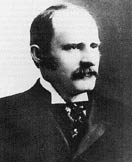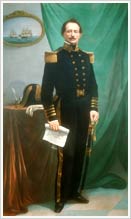Saving Monticello: The Newsletter
The latest about the book, author
events, and more
Newsletter Editor - Marc Leepson
Volume XV, Number 8 August
1, 2018
“The
study of the past is a constantly evolving, never-ending journey of discovery.”
– Eric Foner
STUDIO 360 REDUX: I distinctly remember the day in the summer of
2010 when I sat down in a small studio at WETA, the NPR station in Arlington,
Virginia, put on a pair of large headphones, and began talking into a giant
radio microphone about the Levys and Monticello. On the other end of the line
at the studios of WNYC in New York where Studio 360 originates was the producer
Amanda Aroncyzk, who had contacted me a few weeks earlier.
The interview became part of a 50-minute Studio 360 “American
Icons” program that ran on October 22, 2010. It was very well well done, and I
was gratified that the last ten minutes or so covered the Levy family story I
told in Saving Monticello.
That section also included the words of Susan Stein,
Monticello’s long-time curator, and Harley Lewis, the Levy family descendant
who helped me so much when I was doing the research for the book—and a bit of
clever audio reconstruction.
In the intervening eight years, Studio 360 has rebroadcast
the show three or four times, most recently last month. That most-recent version
included up-to-date info on Monticello’s new Sally Hemings exhibit and the
Thomas Jefferson Foundation’s latest efforts to tell the story of all the
enslaved people at Monticello.
You can hear the original and the latest version of the show
on the Studio 360 website at http://bit.ly/Studio360Monticello
SISTER
AMELIA: Twenty years ago, when
I was doing the research for Saving
Monticello, I spent many hours going through archival material at the
Center for Jewish History at the American Jewish Historical Society in New York
City. It was there that I discovered a treasure trove of primary-source
material on Jefferson M. Levy: several giant scrapbooks containing letters,
speeches, and scores of yellowing, crumbling newspaper clippings about that
prominent New Yorker. The clips included extensive coverage of his fight to keep
Monticello during the 1912-17 effort by members of Congress to take the place
from him and turn it into a government-run shrine to Thomas Jefferson.
 |
| Jefferson M. Levy |
Since then, much of
that material has been digitized and some is available on the Center’s website.
As I was browsing through the material the other day, I came across a newspaper
clipping about Jefferson Levy’s younger sister Amelia.
Amelia Levy, who was born in 1858, married Carl Mayhoff, a
New York City cotton broker, in 1890. The Mayhoffs lived most of the year in
New York City at 66 East 34th Street, the same block where Jefferson
Levy lived. Their only child, Monroe, was born in 1897.
Four years earlier, in the summer of 1893, Amelia had begun
to play a not-insignifcant role in her family’s stewardship of Monticello.
As I noted in the book, after their mother’s death in
January of 1893, Jefferson Levy (a life-long bachelor) asked Amelia—who used the
name “von Mayhoff”—to be his hostess at Monticello, a position she relished. For
the next thirty years the siblings regularly hosted long visits from friends
and relatives who often arrived at Monticello with children and servants. Amelia
also occasionally accompanied Jefferson Levy on his travels to Washington and
to Europe.
During the seasons when she was in charge of Monticello,
Amelia Mayhoff also presided over countless dinner parties, playing hostess to
visiting dignitaries including President Theodore Roosevelt, ambassadors, members
of Congress, and university professors, in addition to family and friends from
Charlottesville, New York, and elsewhere.
Jefferson Levy left his entire estate to Amelia
in a will he had executed on September 28, 1923, less than six months before he
died on March 6, 1924. He wrote the will after he had agreed to sell Monticello
to the newly formed Thomas Jefferson Memorial Foundation. The deal was
finalized on December 1, 1923, when Jefferson Levy signed the title of
Monticello over to the Foundation in New York City. Within days after her
brother’s death in March Amelia announced that she would not stand in the way
of the final transfer of Monticello to the Foundation.
Amelia Mayhoff lobbied in 1928 to have portraits she had
inherited of her brother Jefferson Levy and her uncle Uriah Levy that had long
been hung in Monticello kept on display in the house. But Fiske Kimball, who
was hired to chair the Foundation’s Monticello Restoration Committee, turned
down the officer.
Amelia then donated the full-length Uriah Levy oil portrait
to the U.S. Navy. It is on display today at the Naval Academy
Museum Annapolis New
York City
EVENTS: Taking
a rare break from speaking events in August, but have plenty scheduled for the
fall. Stay tuned. Meanwhile, for info on my latest book, Ballad of the Green Beret, please go to http://bit.ly/GreenBeretBook
GIFT IDEAS:
Want a personally autographed, brand-new paperback copy of Saving Monticello? Please e-mail me at marcleepson@gmail.com I also have a few as-new, unopened hardcover
copies.
Or go to marcleepson.com/signedbooks.html to order copies through my local
bookstore, Second Chapter Books in Middleburg, Virginia. We also have copies of
Desperate Engagement, Flag, and What So Proudly We Hailed, and Ballad
of the Green Beret.




No comments:
Post a Comment